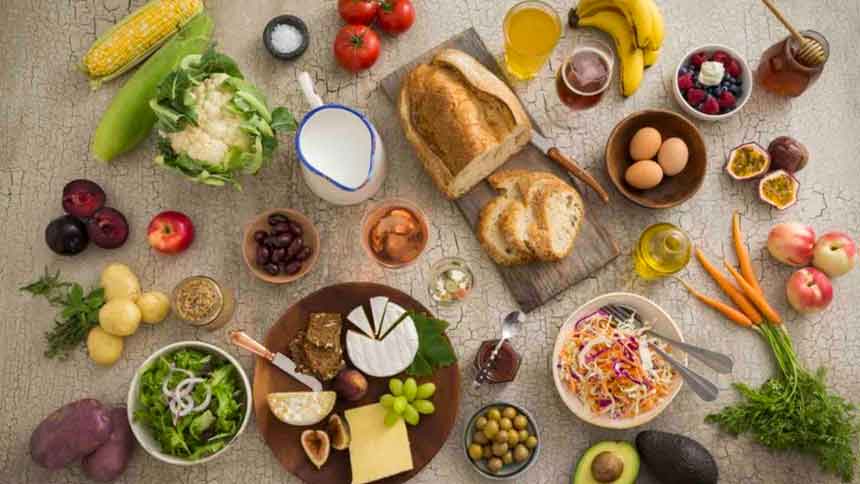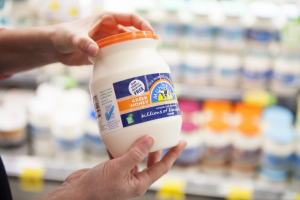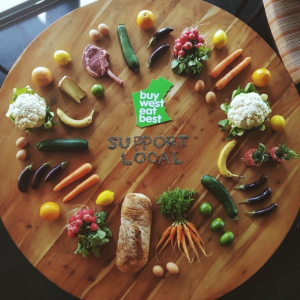
Convenience, unclear labelling and unclear country of origin information can often lead to international imports finding their way into your shopping basket or onto your plate.
So how does one know which restaurants use authentic, West Australian ingredients? Plus, how can we as regular, everyday consumers, learn to easily identify products that are grown, farmed, fished and processed in Western Australia?
Enter stage left: Buy West Eat Best.
This predicament is the entire reason we exist. We’re dedicated to making it easier for consumers to confidently identify Western Australian produce and, in doing so, have attracted hundreds of local suppliers and producers into our program.
Since 2008 we’ve been helping Western Aussies identify, with a single glance, whether what they are consuming is certified as the best from the West. It’s also important to know why we should be buying local. Here’s a guide to help make it easier on both counts:
1. Look for the Buy West Eat Best logo
We maintain strict criteria to ensure only quality Western Australian suppliers and producers can display our iconic logo. How strict? Fresh produce such as vegetables, meat, and seafood must be 100 percent grown, fished or farmed in Western Australia in order to be recognised as a Buy West Eat Best member.
For grocery items, such as sauces, yoghurts, cheese, bread or pies, the main ingredients must be grown, fished or farmed in Western Australia, and the product must be processed and transformed here, too – which helps keep jobs in WA.
Plus, it’s not just suppliers and producers who can earn recognition. Local venues who are part of our restaurant program showcase their commitment by making sure that a minimum of 70 percent of their entrée and main menus hero local ingredients.
Find out which of your favourite local restaurants are on our list here.

Look for the Buy West Eat Best logo when you shop.
2. Eating seasonally is better for us (and the planet)
In-season fruit and vegetables require less energy and resources to produce and transport. With items spending less time in storage, this typically makes them fresher and higher in nutritional value.
The notion of eating food irrespective of the season is something that only really developed in the last half century – prior to that, we had to adapt locally.
Though the invention of technology to refrigerate and store food now enables a higher quality of life throughout the world, the environmental benefit to eating seasonally is clear – from reduced fuel requirements due to lower fuel miles, to less energy required to store and chill.

Supporting what’s in season is best.
Finally, there are added health advantages from eating seasonally, with many in-season foods helping prepare the body for a changing environment. For example, autumn’s squash and root vegetables are loaded with beta-carotene, a nutrient which helps the immune system at a time when many are getting ready for the colder months to hit. Summer fruit and vegetables are notably high in water and often cooling.
3. High demand for local produce = a stronger local economy
Buying local food helps the economic growth and development of Western Australia. By buying local, you are supporting the Western Australian food and drink industry, which extends to growers, producers and businesses, along with their communities.
This is especially true for producers who rely on supermarkets sales of their fresh produce and premium supplies. Consumer behaviour helps to dictate supply, which means a well-spent dollar can be invested to send a message.
Many large retailers forecast stock volume and type based on buying behaviour, so choosing local, organic or seasonal fruit and vegetables will help drive this message home, ensuring repeat orders.
Such trends also impact other areas of the community. In WA, we have a network of well-established farmers markets that help bridge the gap between farm gate and the general public, making it even easier to ensure dollars end up in the pockets of local producers.
If you need more motivation to buy west to ensure you’ll eat best, then be sure to follow us on Facebook, Twitter and Instagram. #buywesteatbest
